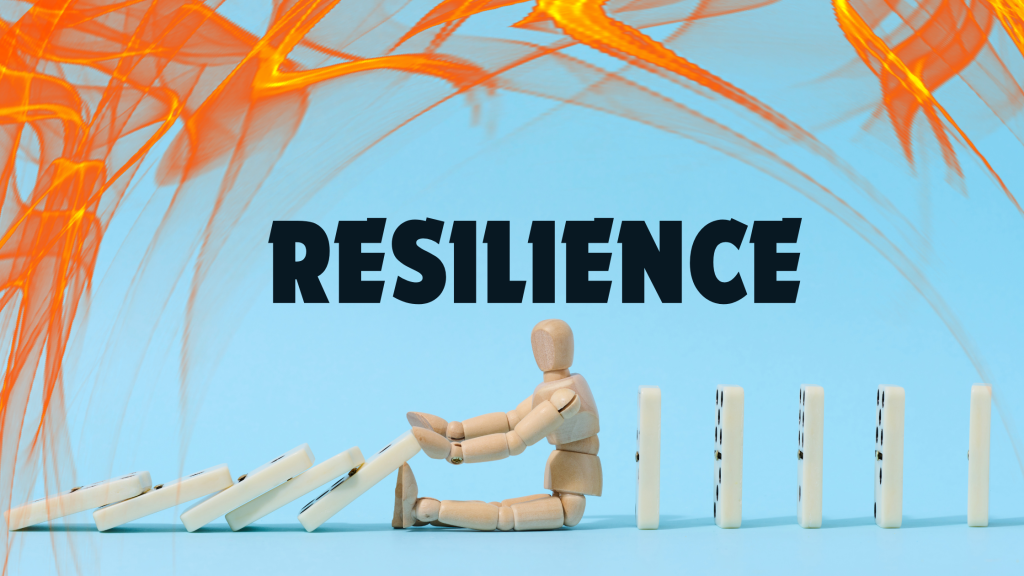
Why Resilience Alone Won’t Save Us from Burnout
On a chilly morning, coffee in hand, you sit at your desk, ready to tackle the day’s challenges. The screen flickers to life, revealing a relentless stream of emails, deadlines, and virtual meetings. Your heart races, and the weight of responsibility settles on your shoulders. Sound familiar? Welcome to the modern workplace—a battleground where resilience meets burnout.
In recent times, the concept of resilience has been championed as the ultimate solution to workplace stress and burnout. Employees are encouraged to build resilience, attend workshops, practice mindfulness, and engage in self-care. While these efforts are valuable, they often overlook a critical truth: resilience alone isn’t enough to combat the deep-rooted issues that lead to burnout.
Resilience: Our Shield Against Storms
Resilience—the ability to bounce back from adversity—is our trusty shield. Like a superhero cape, it empowers us to weather storms, adapt, and emerge stronger. It’s a crucial skill that helps individuals cope with challenges, recover from setbacks, and maintain a sense of purpose and motivation.
However, resilience isn’t a one-size-fits-all solution. It’s not a magical elixir that banishes burnout forever. Instead, it’s a dynamic dance between our inner strength and external pressures. While personal resilience can help mitigate some effects of workplace stress, it cannot address the systemic issues that often cause burnout in the first place.
The Resilience Myth
Picture this: You’re juggling work, family, and personal goals. You’ve attended resilience workshops, practiced mindfulness, and even mastered the art of positive self-talk. Yet, burnout lurks in the shadows. Why? Because resilience alone can’t dismantle toxic work cultures, unrealistic expectations, or chronic stress.
Resilience training can equip employees with tools to handle stress better, but it cannot change a work environment that continually imposes excessive demands, lacks support, or fails to recognize employees’ efforts. Expecting resilience to solve burnout is like trying to put out a raging fire with a garden hose—it’s simply not enough.
The Burnout Equation

Burnout isn’t a simple math problem. It’s not just about subtracting stressors and adding resilience. No, it’s a complex equation involving workload, autonomy, social support, and purpose. Imagine resilience as the numerator and burnout as the denominator. When burnout overwhelms resilience, the result is emotional exhaustion, cynicism, and reduced effectiveness.
To understand this better, consider the following components:
- Workload: Excessive work demands and unmanageable tasks can overwhelm even the most resilient individuals.
- Autonomy: A lack of control over one’s work and insufficient opportunities to make decisions can erode morale and motivation.
- Social Support: The absence of supportive relationships and a sense of community can leave employees feeling isolated and undervalued.
- Purpose: A disconnect between one’s values and the work they do can diminish a sense of purpose and fulfillment.
Beyond Resilience: Building a Fortress

To truly address burnout, organizations need to go beyond promoting individual resilience. They must create environments that support well-being and prevent burnout from occurring in the first place. Here are four key strategies:
- Workload Management: Resilience helps us manage workload spikes, but it won’t rewrite impossible to-do lists. Organizations must address excessive demands, promote realistic expectations, and encourage breaks. Remember, even Iron Man needs a recharge. Implementing effective workload management strategies can help employees maintain a healthy work-life balance and prevent burnout.
- Psychological Safety: Resilience thrives in safe spaces. Cultivate an environment where vulnerability isn’t weakness, where mistakes are stepping stones, not pitfalls. When employees feel psychologically secure, they’re less likely to burn out. Encouraging open communication, providing constructive feedback, and fostering a culture of trust can enhance psychological safety.
- Social Bonds: Resilience blooms in the garden of connection. Encourage team bonding, mentorship, and genuine conversations. A supportive network acts as a buffer against burnout storms. Creating opportunities for social interaction, team-building activities, and peer support can strengthen relationships and reduce feelings of isolation.
- Purpose Alignment: Resilience gains purpose when aligned with meaningful work. Help employees find their North Star—the reason they brave daily battles. Purpose fuels resilience, making it more potent. Ensuring that employees’ roles align with their values and providing opportunities for growth and development can enhance their sense of purpose and engagement.
FINAL THOUGHTS
Resilience matters, but it’s not a silver bullet. As we battle burnout dragons, let’s wield resilience wisely. Let’s build fortresses of well-being—where individual strength merges with organizational compassion. Together, we’ll rewrite the workplace narrative, one chapter at a time.
Remember, my fellow warriors: Resilience isn’t about invulnerability; it’s about rising stronger after every fall.
Burnout is a complex issue that requires a multifaceted approach. By addressing the root causes of burnout and creating supportive, healthy work environments, we can help employees thrive and sustain their resilience over the long term.

